Do wolves really change rivers?
Part Two
Part Two
Editor’s note: This is part two of a two-part story.
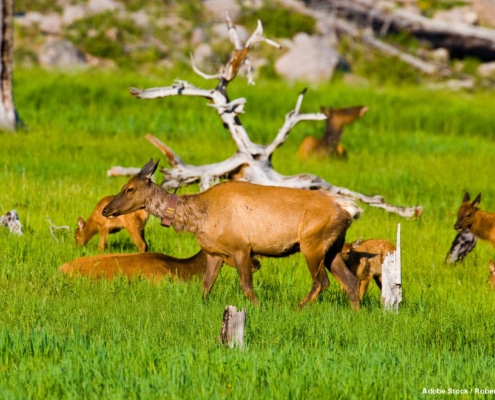 Fewer Elk? Or Elk that Behave Differently?
Fewer Elk? Or Elk that Behave Differently?
Some of the first evidence for changes in elk behavior leading to a trophic cascade came in the mid 2000s using data from 13 GPS-collared elk. The biologists found that as wolf use in an area increased, elk habitat preference gradually shifted from aspen stands to conifer forests, aligning with earlier work which found that aspen browsing was less severe in high wolf areas than low wolf areas. However, this work used elk GPS-location data collected every five hours and was unable to account for changes in wolf use throughout both space and time.
More recent work from 2018 and 2019, capitalizing on technological advancements for tracking elk and wolves, added a more nuanced perspective. By accounting for daily activity patterns of collared wolves, cougars, and elk, this approach found that, yes, elk are avoiding wolves, and even more so cougars, but it’s not that simple. When wolves were most active around dawn and dusk, elk avoided areas of high wolf use by moving into steeper, forested terrain, but returned to these areas as soon as wolf activity declined during mid-day and at night. Similarly, when cougars were most active at night, elk avoided steeper, forested terrain and moved back into flatter open areas. In doing so, elk were still able to use the same areas and browse aspen as they always did; they just shifted the time of day they used these places. On the other hand, now increasing evidence suggests that as elk density declines, the probability of aspen recruitment increases rapidly, and that the effects of declining elk density are 8-20 times stronger than any measure associated with elk behavior in response to wolf predation risk. Therefore, it’s not a landscape of fear, but a landscape of fewer elk that’s enabled plant recovery. So, what caused the elk decline?
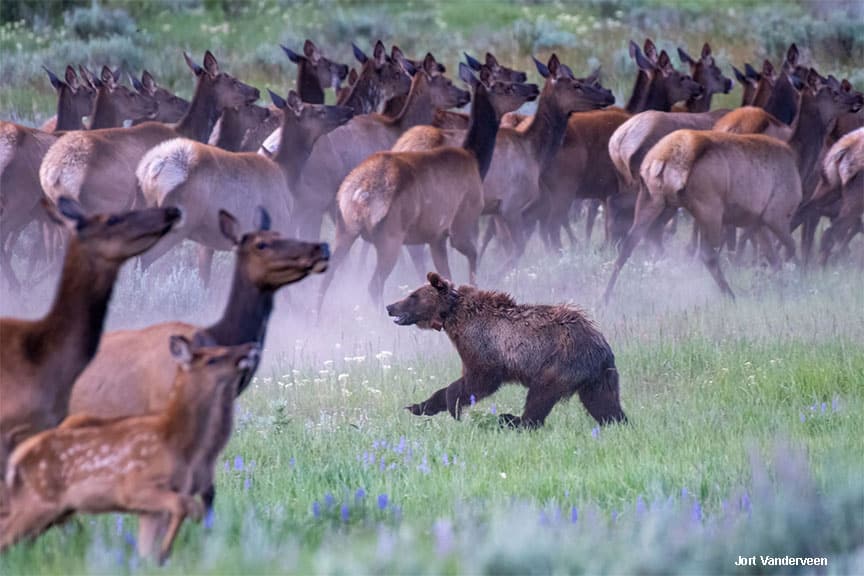 The Decline
The Decline
Shortly after wolf reintroduction in 1995-1997, the northern Yellowstone elk herd started declining rapidly. Within eleven years, the elk herd dropped from 19,000 to 7,000. Because of this correlation, it made sense superficially to attribute this decline in elk, and the cascading effects that followed, to wolves. However, when one digs deeper into the potential factors at play, it quickly becomes clear that the conclusion is not so clear. To understand what really caused the elk decline, one first needs to know a bit about how predators and other factors like climate, can impact prey populations.
For figuring out the direct impact (i.e., killing prey) that a predator might have on prey, we need to know a few things: the number of predators compared to the number of prey, how often an individual predator kills prey (kill rate), and the age, sex, and condition of the prey killed by the predator.
Let’s start with predator numbers during the elk decline. Wolves were reintroduced during 1995–1997, and as a result, occurred at relatively low densities early on, before quickly tripling by the mid-2000s, and then declining and leveling off over the last two decades. Cougars had begun recolonizing Yellowstone in the early 1980s, and in the years following wolf reintroduction, had achieved fairly stable densities that have persisted to the present. Grizzly bear density quickly grew from the late 1980s to the mid-2000s when it stabilized. Black bears likely grew similarly to grizzly bears but achieved much higher densities. Meanwhile, the elk population did the opposite, declining rapidly from their high of about 20,000 in the mid-1990s to about 7,000 now. In other words, during most of the elk decline in the 1990s and early 2000s, the number of wolves and other large predators on the landscape was relatively low, making it harder for predators to have a substantial impact on the elk population. But knowing densities isn’t enough; how many elk, and which elk, does each predator kill?
Before discussing that, we must establish which elk matter most for the growth and success of the population. Prime-aged female elk are most important because they survive long, producing many offspring, followed by calves, old-aged females, and last, males. (Sorry guys, it turns out we’re not that important.) Wolves being coursing predators with low hunting success (10–15%) kill predominantly elk calves, particularly in summer, and old female elk averaging 14 years old, close their average lifespan. On the other hand, cougars are ambushers that have much higher hunting success and tend to kill more prime-aged female elk than wolves do — although still skewed towards older elk — while also killing elk calves and yearlings at a high rate.
Bears are unique; they are experts at killing elk less than 3 months old. An elk calf survival study from 2003–2005 found that grizzly bears alone killed more such elk calves than were killed by wolves, cougars, and coyotes across an elk’s entire first year. Combined, grizzly and black bears accounted for 60% of calf deaths, while wolves only accounted for ~15%. So, bears have the biggest impact on elk calves.
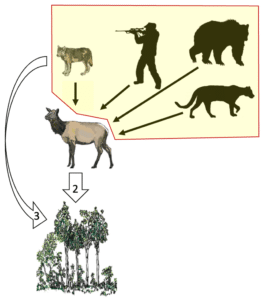 But what about adult elk?
But what about adult elk?
With wolf kill rate of elk steadily declining as the elk population declined, wolves killed only 4–6% of the elk population annually during the mid-late 1990s. Remember, there were very few wolves and a lot of elk on the landscape at the time. As wolf numbers rose and elk numbers continued to decline, wolf predation reached a peak in the mid-late 2000s at 10-12% of elk killed annually. Finally, this dropped to about 6% in the last 15 years as elk, and wolf numbers stabilized. Cougars, being more successful , killed elk at 2–3 times the daily rate per individual cougar than did wolves in winter. As a result, cougars likely killed a higher proportion of the elk population during the 1990s when wolves were recolonizing, similar proportions when wolves were at their peak densities in the 2000s, and at higher rates in the last decade (8–10% of elk population annually).
In summary, when much of the elk decline was happening, natural predators, especially wolves, killed a relatively small proportion of the elk population. Wolves also killed mostly calves and old elk that were less important for future elk population growth. So, how did the elk population decline so rapidly if predators didn’t play a major role? Well, there’s one predator we haven’t talked about yet: humans.
Before wolves were reintroduced and in the decade after, the state of Montana used intensive human hunting to drive elk numbers down. In addition to standard, trophy-style hunts focused on bull elk, state managers also promoted something interesting called the Gardiner late hunts. These were late-season hunts in January and February that targeted thousands of female adult elk moving outside the park’s north entrance, killing on average 12.5% of the elk population (as high as 19%) in the first five years after wolf reintroduction. Roughly 75% of the elk killed in late hunts were females, most of which were prime-aged that would have played a disproportionately large role in future elk-population growth.
The late hunts mostly subsided in the mid 2000s, but not before playing a major role in the elk decline. When including the effects of climate, such as the severe winter that plagued Yellowstone elk in 1997–98 and the droughts that followed, a study published in 2005 found that 98% of the elk-population decline was explained by human hunting , severe climate, and natural regulation of elk from reaching such high densities. This suite of factors reduced the elk population to where they could then be naturally regulated by a recovered large carnivore community of wolves, cougars, and bears.
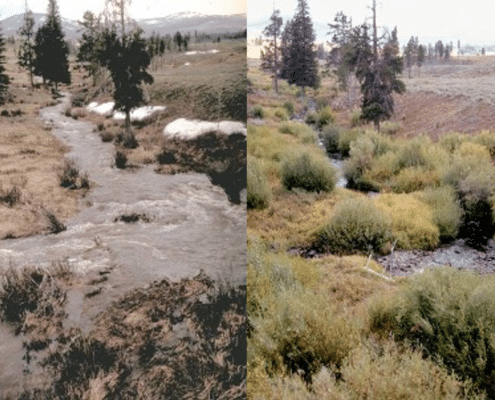 A Muddy Cascade
A Muddy Cascade
At the end of the day, these facts occupy but a blip in time. The scales in space and time that nature operates under are both tiny and massive. The ecosystem we see today could be forever changed by a catastrophic fire or flood tomorrow. In 1988, a series of fires burned almost 40% of Yellowstone. The scars left by the fires are still seen today in the deadfall and new-growth pines and in the fewer moose able to thrive in Yellowstone. These moose intensively browsed willow, even more than elk that have been the focus of trophic cascades. Fewer moose has meant less browsing, enabling willow growth. The conservation and recovery of bison has also drastically influenced the park’s vegetation and will continue to do so. Roughly 100 beavers were reintroduced north of Yellowstone from 1986–1999, likely enabling their recolonization of the park and the changes they’ve initiated. Climate change will mean drier climates, less snow, more fires, and more extreme weather that can cause floods like in 2022 that did forever change rivers.
In other words, the jury is still out on the strength of trophic cascades and just how much wolves and other factors have really contributed. Complexity isn’t a bad thing; there need not be a simple explanation or solution for why plant communities or animal communities recover. The fact that so many factors are at play is a testament to how diverse and special places like Yellowstone are. It showcases the role that each individual species plays in maintaining a healthy ecosystem. Wolves aren’t ecosystem saints, just like they aren’t sinners, they are simply one of these species adding to the balance as they try to survive.
All we can do as scientists is appreciate this complexity, help explain it to wider audiences, and hope that we can disentangle just some of the nuances to better protect and conserve wildlife and wild places. At the end of the day, people are often the arbiters of change, of recovery, and of annihilation. It was our decision to eliminate wolves and to bring them back, to help them recover across North America, but also to hunt them. Recognizing our place in ecosystems and the extraordinary role that we now play in them is just as essential for protecting the natural world as are our attempts to understand it.
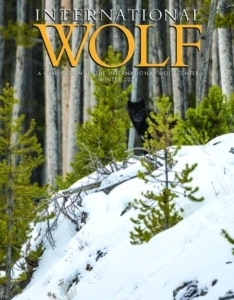 This article was originally published in the Spring 2025 edition of International Wolf magazine, published quarterly by the International Wolf Center. The magazine is mailed exclusively to members of the Center.
This article was originally published in the Spring 2025 edition of International Wolf magazine, published quarterly by the International Wolf Center. The magazine is mailed exclusively to members of the Center.
To learn more about membership, click here.
About the author: Jack Rabe is a Ph.D. candidate in conservation sciences at the University of Minnesota researching large carnivore competition and predator-prey interactions in Yellowstone. In following the lives of wolves, cougars and elk in the Yellowstone backcountry, he has hiked enough miles to walk coast-to-coast across America.
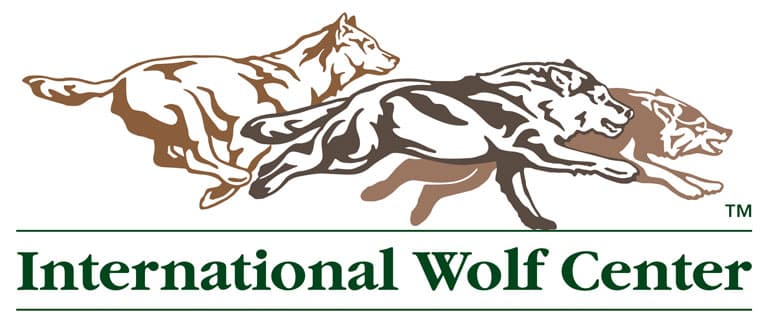
The International Wolf Center uses science-based education to teach and inspire the world about wolves, their ecology, and the wolf-human relationship.
